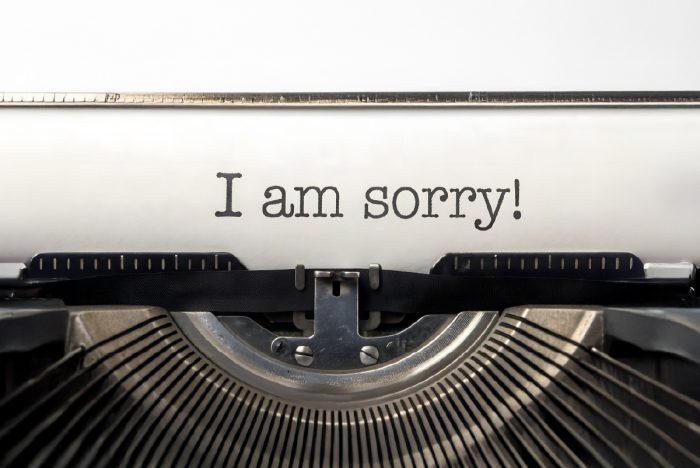
Attorneys Should Look to ABA Formal Opinion 481 When Deciding What Errors Need to Be Disclosed to Their Clients
Not too long ago, I ghostwrote a letter of apology for a client. He had missed an appeal filing deadline. He was aghast at his mistake, but took some solace from the fact that he had repeatedly (and correctly) told his client the case was a very difficult one.
While my client’s need to disclose his error was obvious, I was still pleased that he was unhesitant. But in my over 30 years defending attorneys, I have had a number of clients who were confused on that score. Indeed, years ago, I had a case in which my client let a patent application go abandoned, and then misled his client about its status for years. He even, at one point, proposed his client cross-license the technology to a third-party as though the long abandoned and unrevivable application was still pending. Not surprisingly, when he was eventually sued, his misconduct seriously prejudiced his defense. Thankfully, cases in which the attorney affirmatively misleads the client are relatively rare, still it is not that uncommon for clients to fail to disclose material errors.
Helping my client with his apology prompted me to refresh myself on the contours of an attorney’s obligation to disclose error. While the rules are generally intuitive, a brief review of them is a useful exercise.
Rule 1.4 of the Michigan Rules of Professional Conduct governs the topic. Of particular relevance is Rule 1.4(a)’s requirement that “a lawyer to keep a client reasonably informed about the status of a matter” and Rule 1.4(b)’s requirement that “a lawyer explain a matter to permit the client to make informed decisions regarding the representation.”
Formal Opinion 481 of the ABA Standing Committee on Ethics and Professional Responsibility, issued April 17, 2018, reads those same provisions, which track Model Rule 1.4(a)(3) and 1.4(b), to require “a lawyer to inform a current client if the lawyer believes that he or she may have materially erred in the client’s representation.” (Op. 1, emphasis added) The Opinion also requires a lawyer to give notice “of a material error promptly under the circumstances.” (Op. 2, emphasis added)
That the error must be material is, of course, a limitation on the scope of the duty to disclose error. The Opinion defines an error as “material”:
. . . if a disinterested lawyer would conclude that it is (a) reasonably likely to harm or prejudice a client; or (b) of such a nature that it would reasonably cause a client to consider terminating the representation even in the absence of harm or prejudice.
The Opinion recognizes that determining whether an error must be disclosed can at times be difficult “because errors exist along a continuum.” Quoting a Colorado Bar Ethics Opinion, the Opinion states that errors can range from those that “plainly require disclosure (a missed statute of limitations or a failure to file a timely appeal) to those ‘that may never cause harm to the client, either because any resulting harm is not reasonably foreseeable, there is no prejudice to a client’s right or claim, or the lawyer takes corrective measures that are reasonably likely to avoid any such prejudice.’”
Errors by lawyers in between those two extremes require considered analysis. Such errors require the attorney to take a step back and consider what a “disinterested lawyer” would conclude. That may not be easy for the attorney who committed the error. Given that, lawyers should not hesitate to discuss the matter with a thoughtful partner or attorney colleague or, if it is an option, discuss the issue with their firm’s general counsel.
That there is no obligation to disclose a material error to a former client may surprise some. But the Committee’s view of the status of a client as “current” or “former” is a broad one. The client of an attorney handling multiple matters will remain a current client despite the end of the representation as to one of the matters. The Opinion states:
If a lawyer represents a client in more than one matter, the client is a current client if any of those matters is active or open; in other words, the termination of representation in one or more matters does not transform a client into a former client if the lawyer still represents the client in other matters. (Op. 6)
The Opinion states that “[s]ubstantive law, rather than rules of professional conduct, controls whether an attorney-client relationship exists, or once established, whether it is ongoing or has been concluded.” (Op. 5) However, this may get murky in some states and under some circumstances. In Michigan, an attorney-client relationship often ends as to a matter when the attorney completes the “specific legal service that the lawyer was retained to perform.” Kloian v. Schwartz, 272 Mich. App. 232, 238 (Mich.App. 2006). Thus, under the “substantive law,” a client may be a former client as to the matter in which the previously undisclosed and undiscovered error occurred, but a current client as to another matter. Still, under such circumstances, a Michigan attorney would be well advised to carefully consider the specific circumstances and discuss his or her disclosure obligations with others as suggested above.
In all events, though, ABA Formal Opinion 481 is an excellent point of departure whenever the question whether or not to disclose error is less than obvious.
































